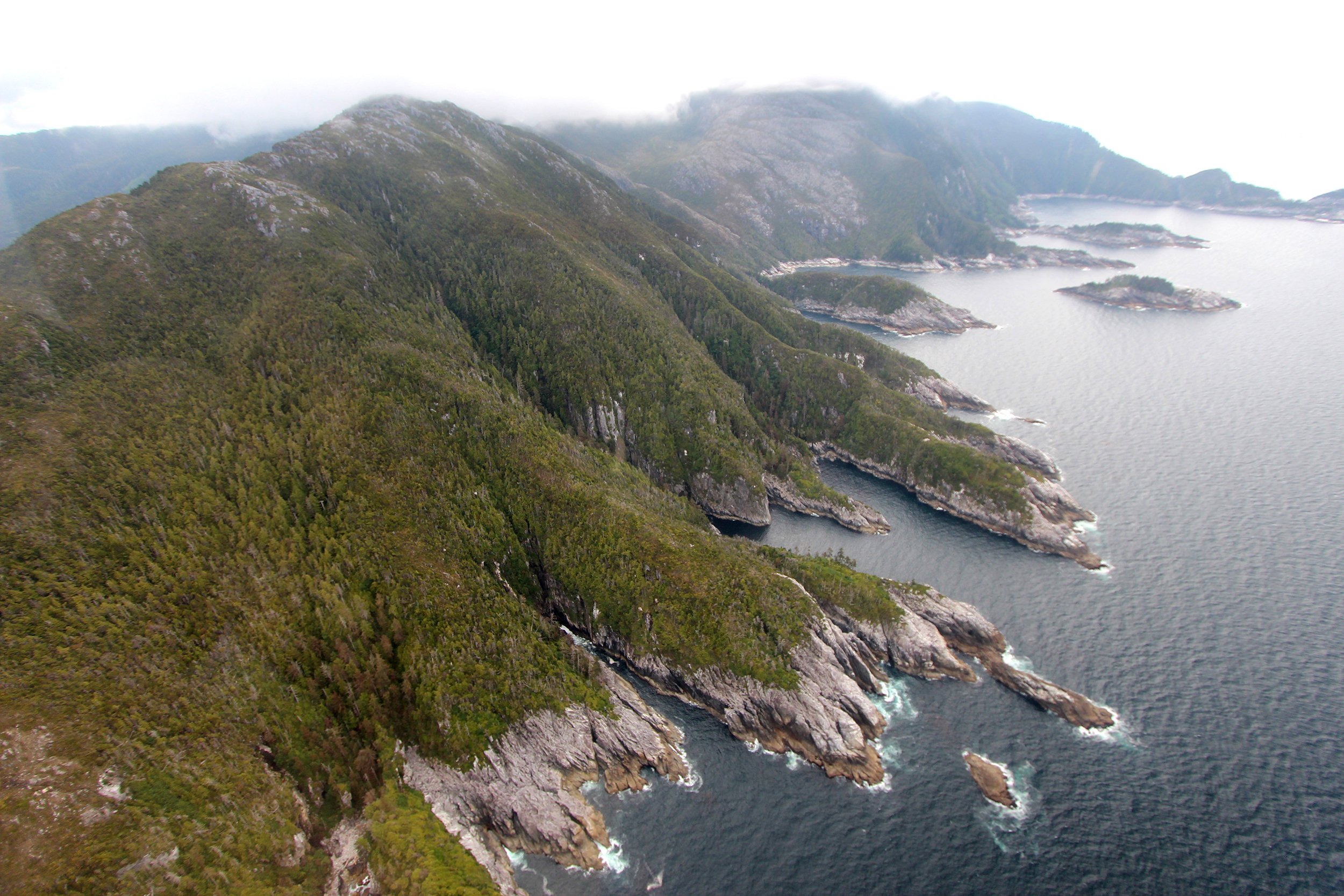
Humans have always been good at spreading out and covering ground, but we can't tackle every obstacle in our path. Giant ice sheets that spread for miles in every direction, for example, tend to stop all but the most adventurous of us quite efficiently—and they likely shaped the path humans took to first enter North America from Asia.
Scientists have been pondering two possible routes for decades. One crawls along the Pacific Coast, weaving between the islands of southern Alaska; the other slips between two giant ice sheets, much further east and inland. In order to help figure out how plausible the first route is, a team of scientists wanted to measure how long ago ice sheets retreated from the coastline—and now they've done just that, as they report in a new paper published in the journal Science Advances. The new research suggests the route would have been accessible about 17,000 years ago.
"We didn't know much about the ice sheet history along the Pacific coast," senior author Jason Briner, a glacial geologist at the University at Buffalo in New York, told Newsweek. The new work changes that, he said. "We figured out that the ice sheet went away and unblocked the Pacific route earlier than the middle of the continent," he added.
Read more: Ancient fossil footprints show humans may have hunted giant sloths in New Mexico
Briner and his colleagues used a technique for analyzing the chemical fingerprint of beryllium in the rock. That signature tells scientists when rock became uncovered, and that analysis on the Alaskan rocks told the team the ice had retreated about 17,000 years ago.
The team also built a timeline of animal bones discovered in a coastal cave, which had previously been studied by other scientists. It was apparently a favorite snacking spot for one or more critters, who carried pieces of animals there to munch away on. All those bones built up as a sort of cemetery, and thousands of years later, scientists have been able to pinpoint when those animals died.
That timeline shows that bones were carried in pretty regularly over time—except for a short window between about 19,800 and 17,200 years ago. Briner and his colleagues believe that represents a brief period when the cave's entrance was blocked by ice. They're particularly suspicious because just before and after that blank spot, the bone record is particularly rich in ring seals, which are closely associated with ice sheets—and the seals, of course, could have made tasty meals for humans venturing along a newly uncovered route.
And this gets to why it matters what route humans took to reach North America: The skills needed to travel along the coastal route are different from those needed to survive further inland. They would have hunted different animals and relied on different technologies to thrive.
"You can't go down the coast without boats. There would have been a lot of island-hopping," Briner said. "The ocean feeds you and no culture does that without boats."
The work also fits into the bigger context of scientists' understanding of early humans in the Americas. That understanding was in large part shaped by distinctive arrowheads dating to about 13,000 years ago that archaeologists call Clovis points in honor of the town where they were first discovered.
But over the years, scientists have realized that there was plenty happening on the continent before the Clovis settlements. "For the last 30 years, people have been breaking the Clovis barrier with various archaeological discoveries," said E. James Dixon, an anthropologist recently retired from the University of New Mexico who wasn't involved in the new research.
That was a problem because scientists needed to find another route into the heart of North America, since the inland route was still blocked by ice—hence the interest in the hypothesized coastal route.
Both Briner and Dixon emphasize that the new research doesn't actually prove that the coastal route is what got humans into North America, just that it would have been possible. "They're not looking for artifacts, what they're doing is dating the time at which ice covered the region," Dixon said. "It does not prove the hypothesis at all, although it does strengthen it."
Someday soon, he expects, scientists will be sure which route early humans took. In the meantime, as they continue to trace the long-ago journey, we'll have to satisfy ourselves with the knowledge that we'll likely never have to make a similar trek ourselves.
Uncommon Knowledge
Newsweek is committed to challenging conventional wisdom and finding connections in the search for common ground.
Newsweek is committed to challenging conventional wisdom and finding connections in the search for common ground.
About the writer
Meghan Bartels is a science journalist based in New York City who covers the science happening on the surface of ... Read more
To read how Newsweek uses AI as a newsroom tool, Click here.






